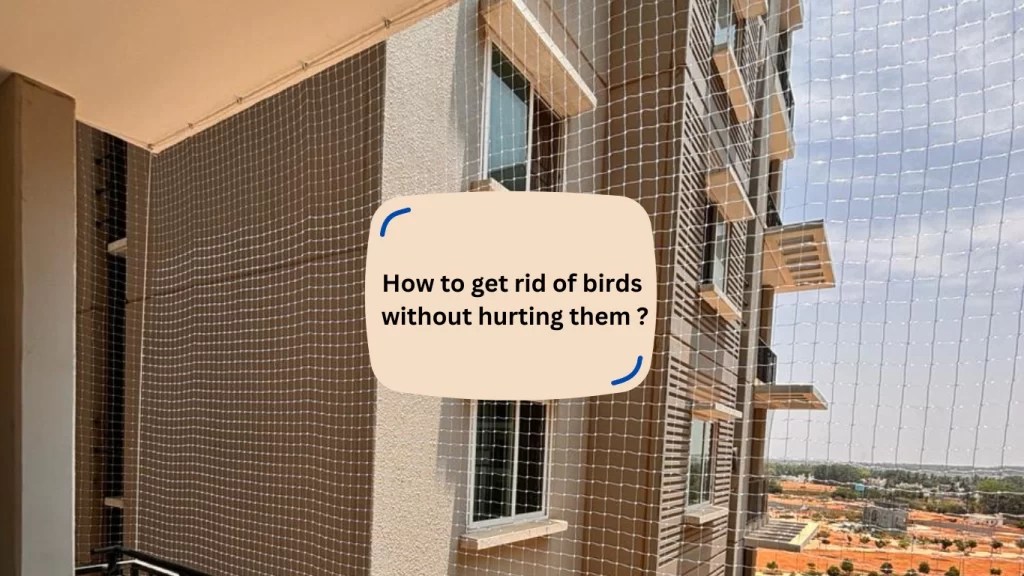Dealing with birds can be a challenge, especially when they become a nuisance around your home or property. However, it’s essential to find humane ways to get rid of birds without causing harm to them. In this guide, we’ll explore effective methods for bird control that prioritize the well-being of these creatures.
Understanding the Importance of Humane Bird Control:
Birds play a vital role in ecosystems, contributing to pollination, seed dispersal, and pest control. It’s crucial to respect their presence while finding ways to manage their behavior in human environments. Humane bird control methods aim to deter birds from unwanted areas without causing them injury or distress.

Creating a Bird-Friendly Environment Before resorting to deterrent methods, consider making your property less attractive to birds:
- Remove Food Sources: Keep outdoor areas clean and free of food scraps or spilled birdseed that may attract birds.
- Limit Nesting Sites: Seal off openings or gaps in buildings where birds may nest, and trim trees and shrubs to reduce nesting opportunities.
- Use Visual Deterrents: Install scare devices such as reflective tape, predator decoys, or balloons to deter birds from landing or roosting.
Non-Lethal Deterrent Methods Several non-lethal deterrent methods can effectively discourage birds from frequenting certain areas:
- Netting: Install bird netting to create physical barriers that prevent birds from accessing specific locations, such as balconies, roofs, or gardens.
- Spikes or Wire Mesh: Use bird spikes or wire mesh to cover ledges, windowsills, or other perching areas, making them less appealing to birds.
- Noise Devices: Employ sound-emitting devices that emit sounds or ultrasonic frequencies that are unpleasant to birds, deterring them from the area.
Environmental Modifications Make environmental changes to discourage birds from roosting or nesting:
- Lighting: Install bright lights or motion-activated floodlights to disrupt birds’ night-time roosting patterns.
- Water Features: Install sprinkler systems or water jets that activate when birds approach, discouraging them from landing or roosting.
Regular Maintenance and Monitoring Once deterrent methods are in place, it’s essential to maintain and monitor their effectiveness:
- Inspect Regularly: Regularly inspect deterrent devices and environmental modifications to ensure they remain functional and intact.
- Adjust as Needed: If birds adapt to deterrent methods, consider adjusting or supplementing them with additional measures to maintain effectiveness.
Conclusion:
Getting Rid of Birds without harming them requires a humane approach that prioritizes their well-being while addressing human concerns. By implementing non-lethal deterrent methods, making environmental modifications, and practicing regular maintenance and monitoring, you can effectively manage bird behaviour in your surroundings while fostering coexistence between humans and wildlife.






